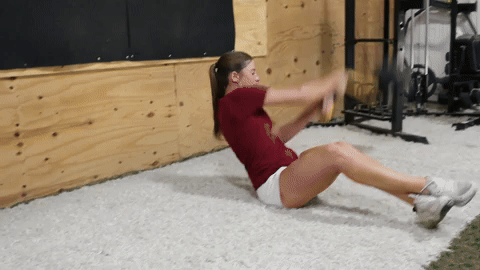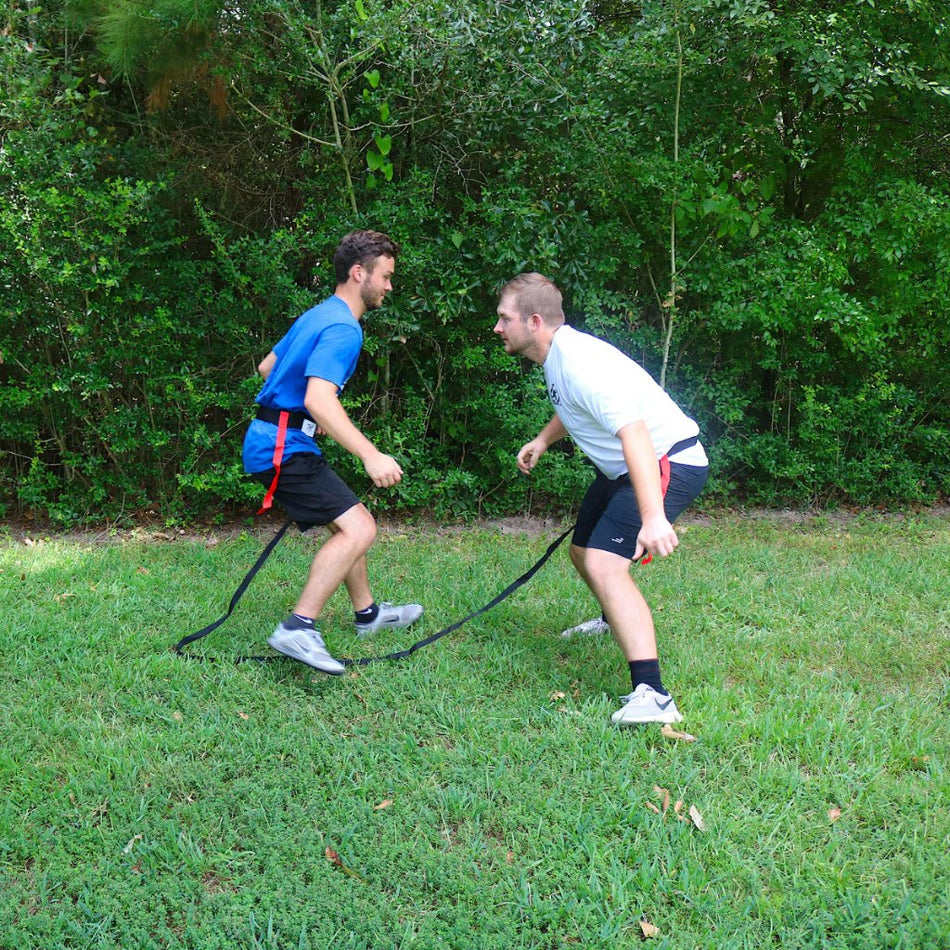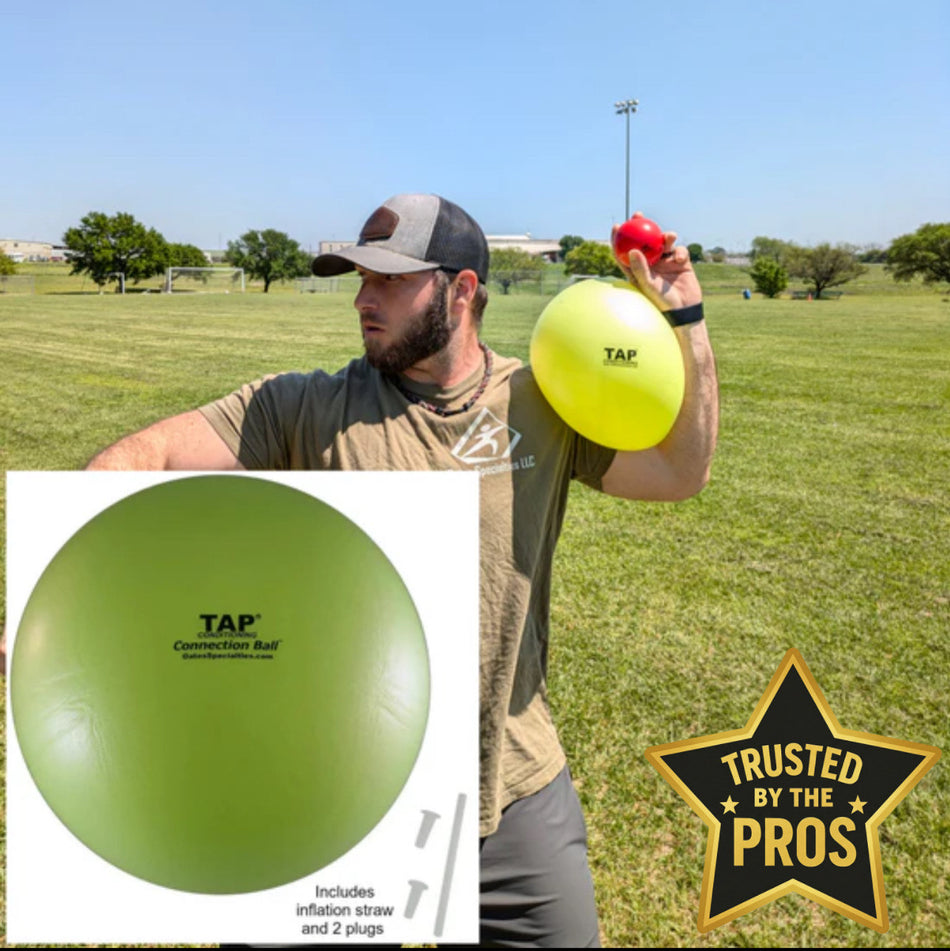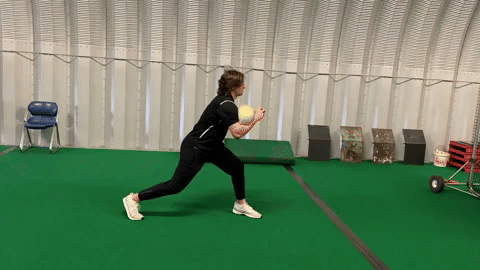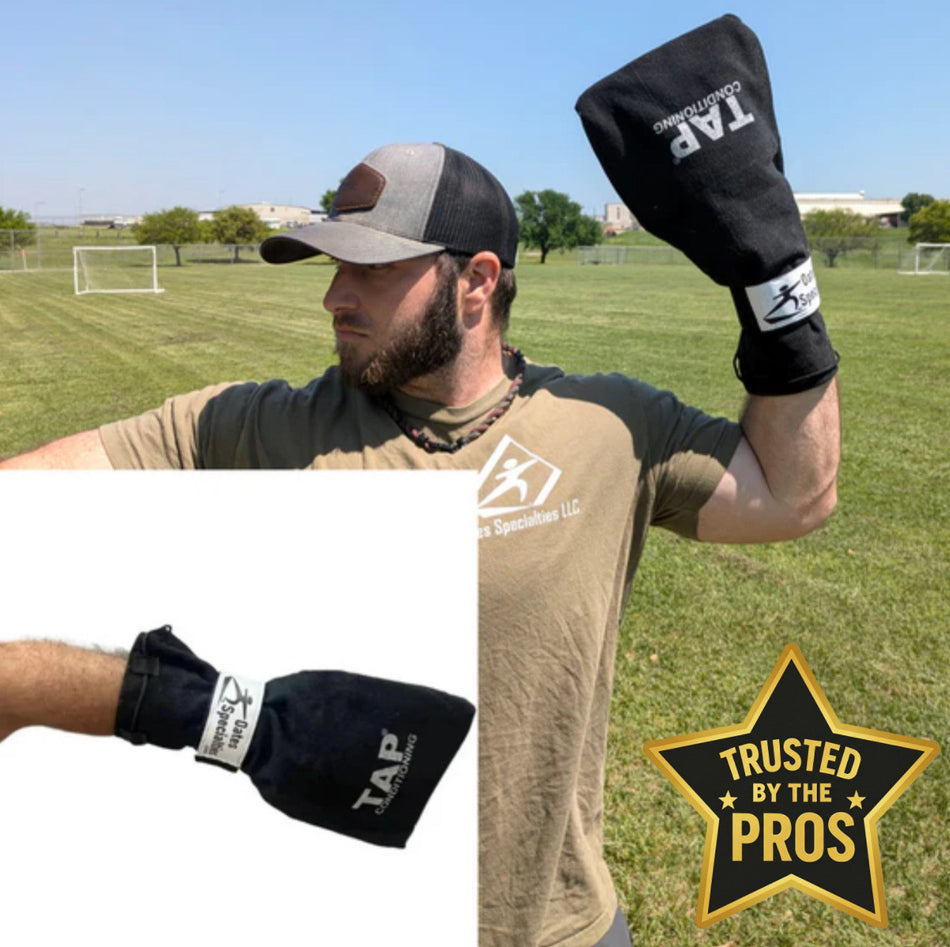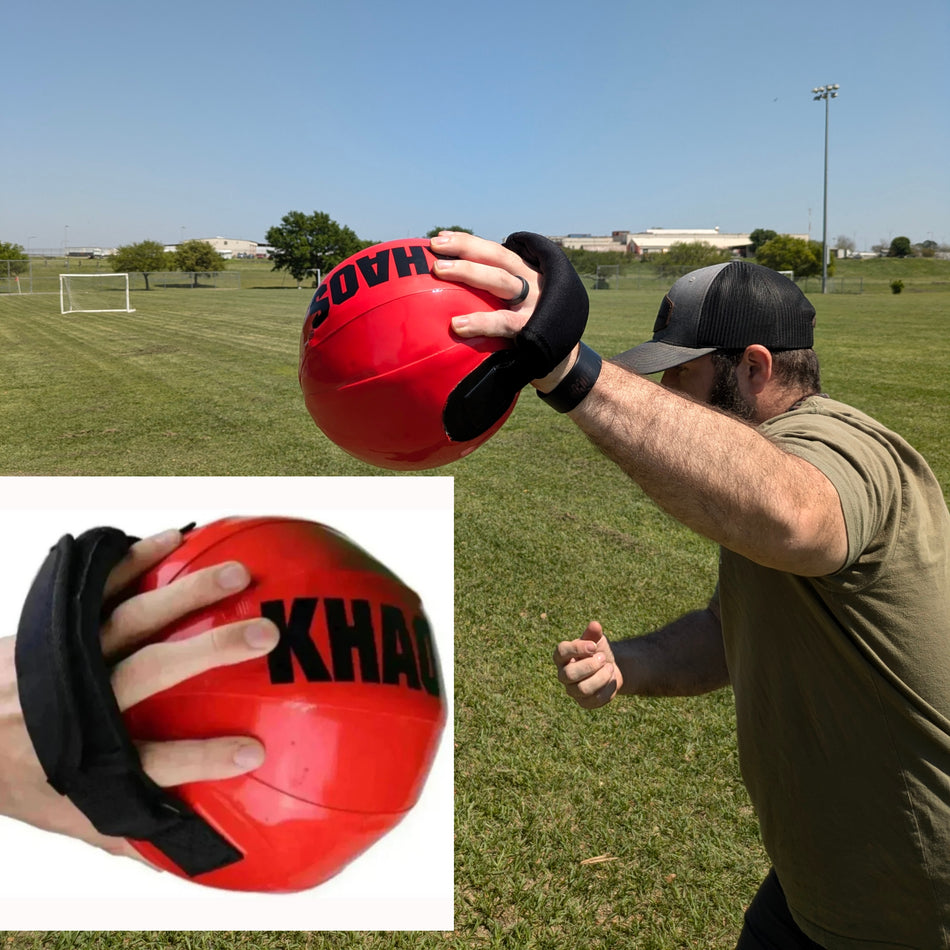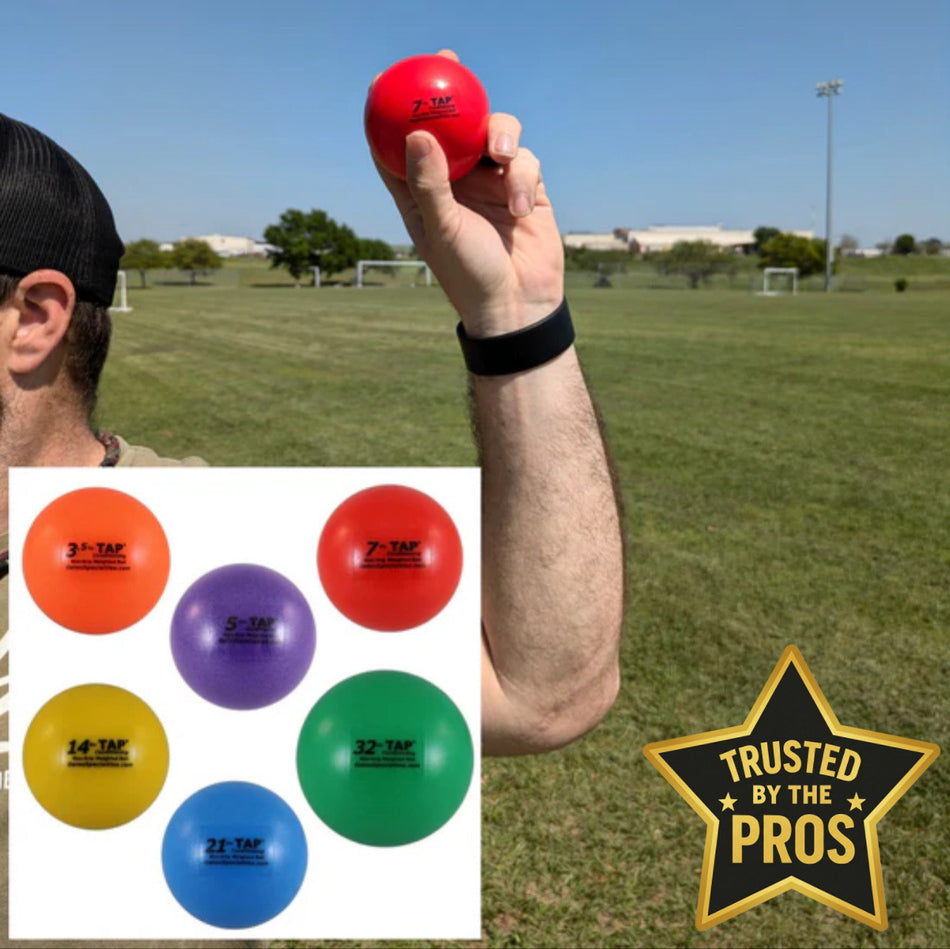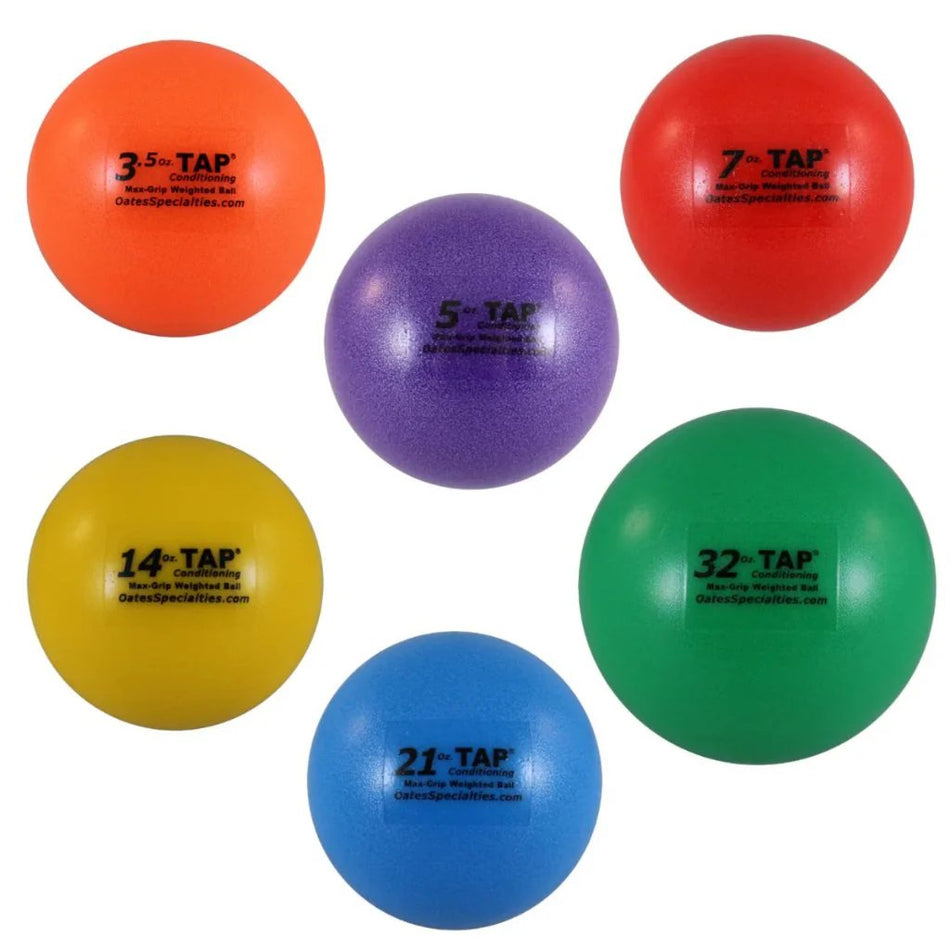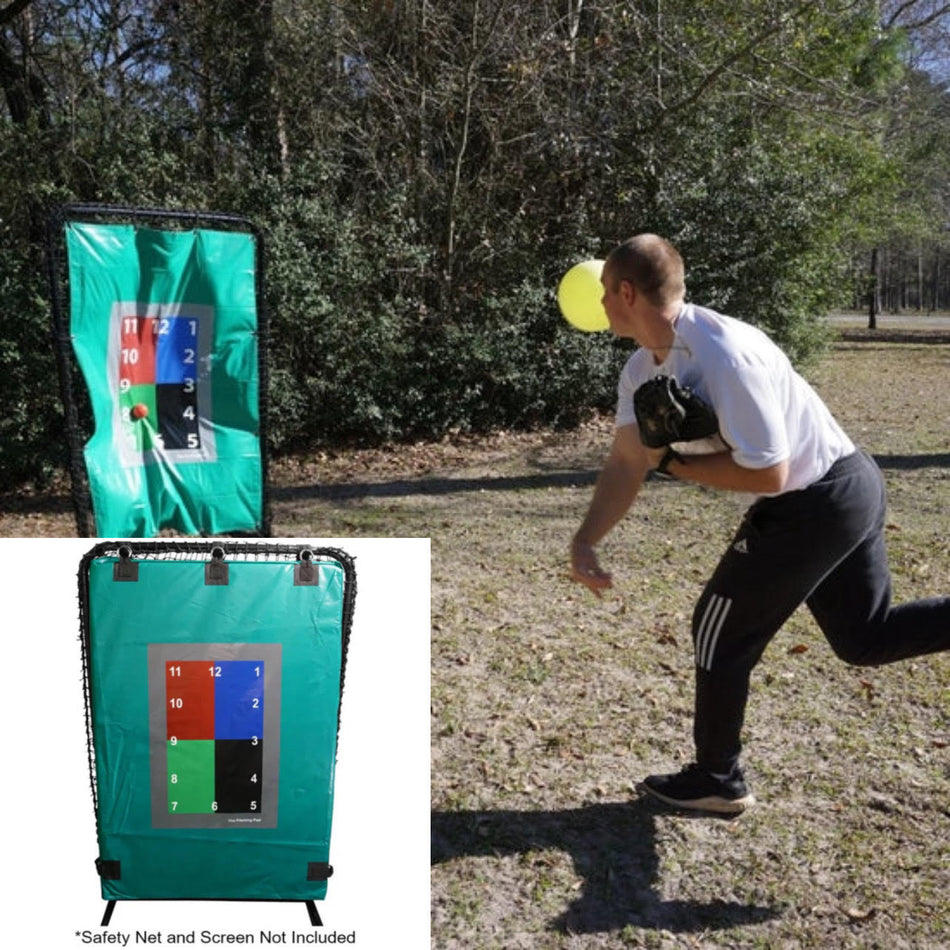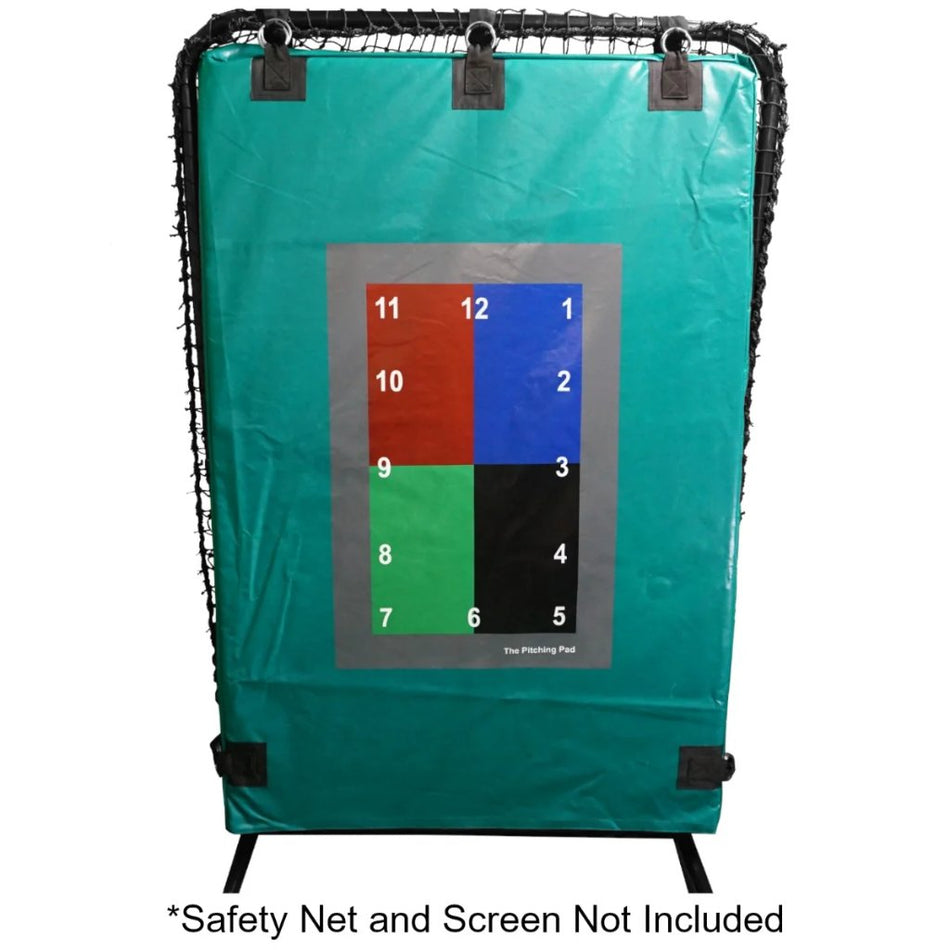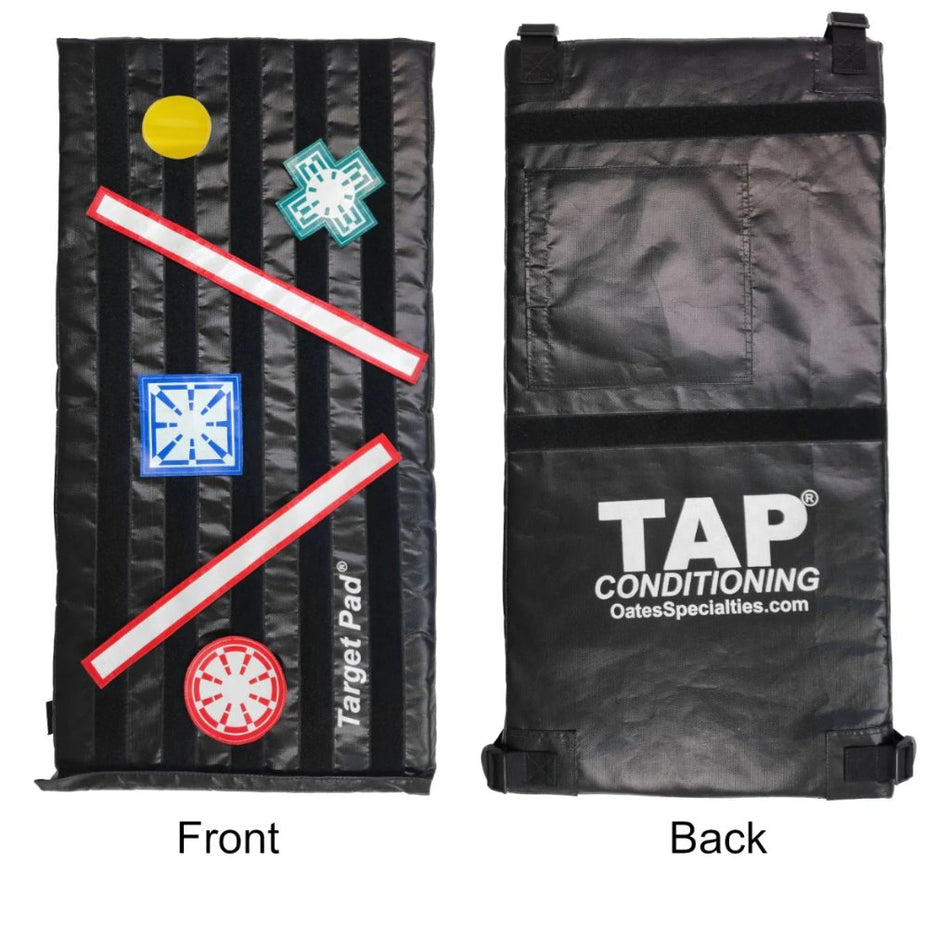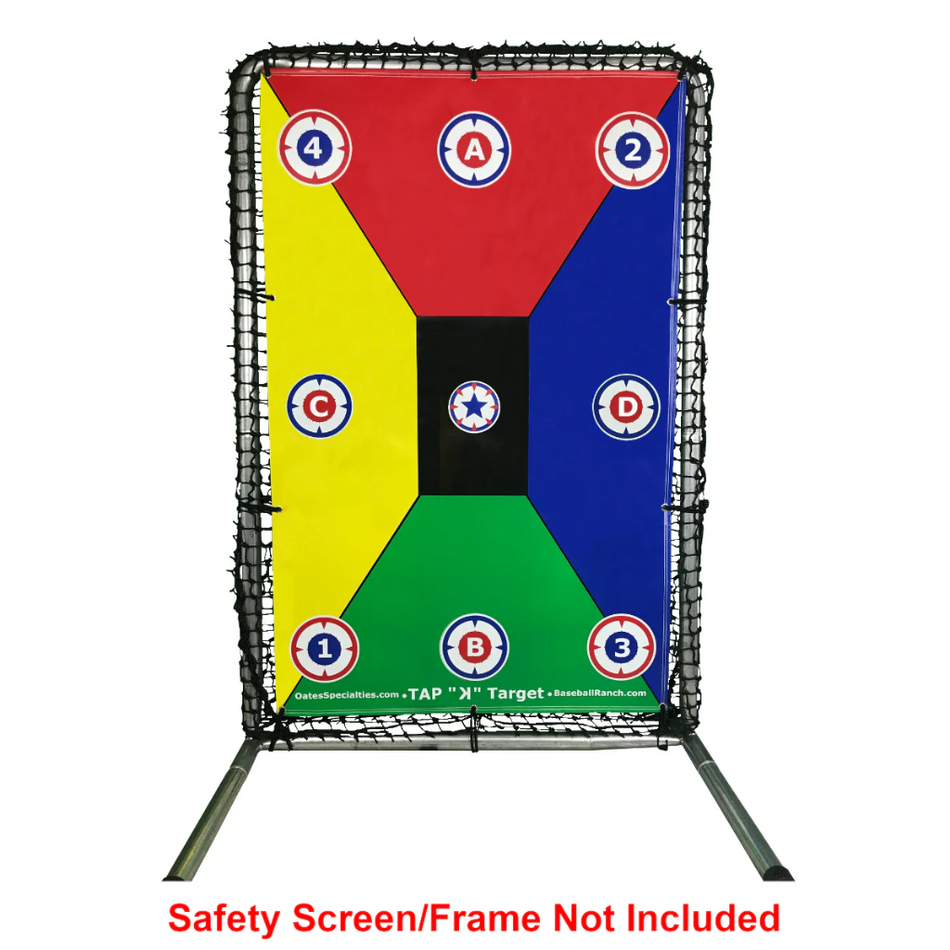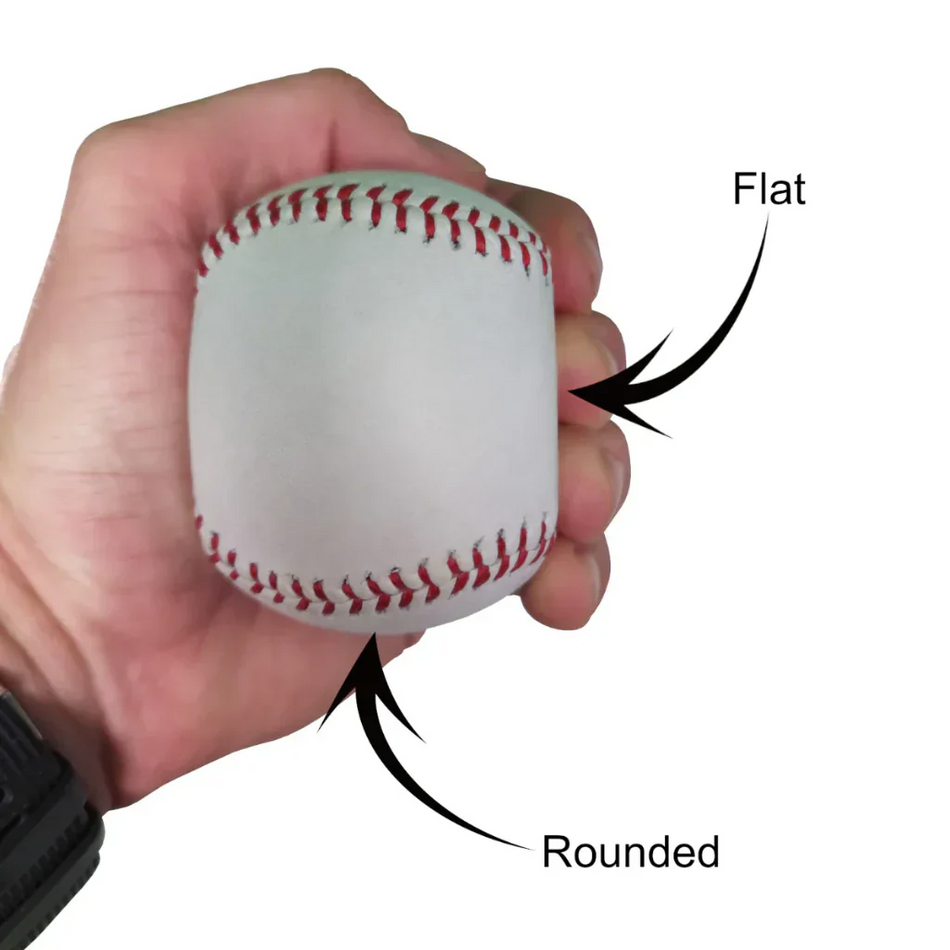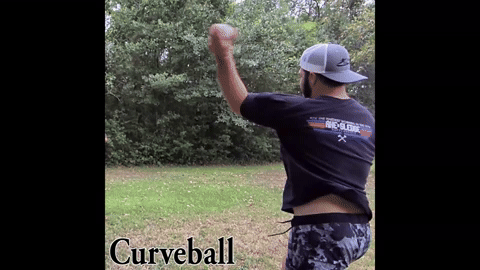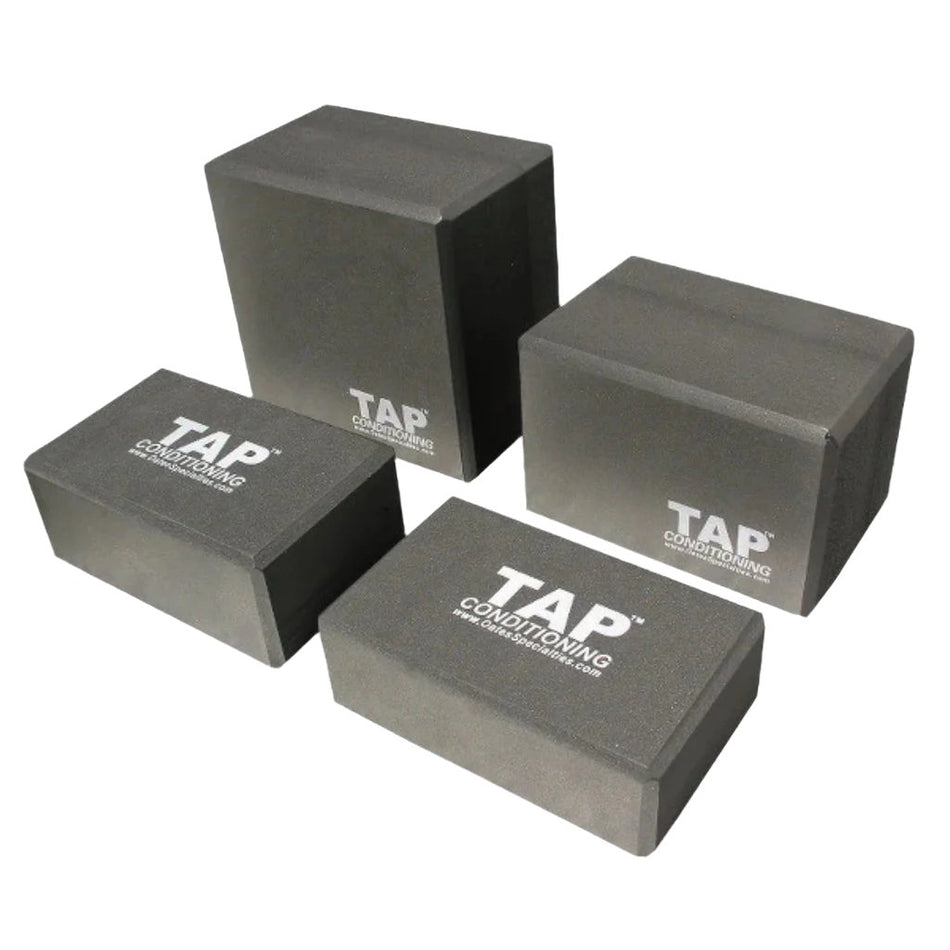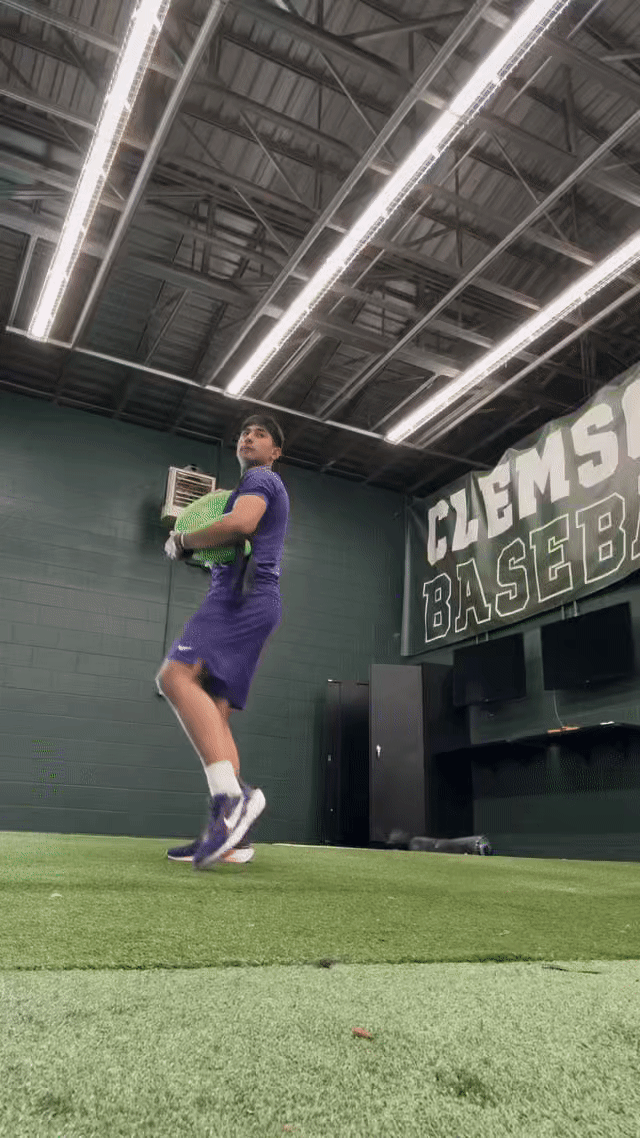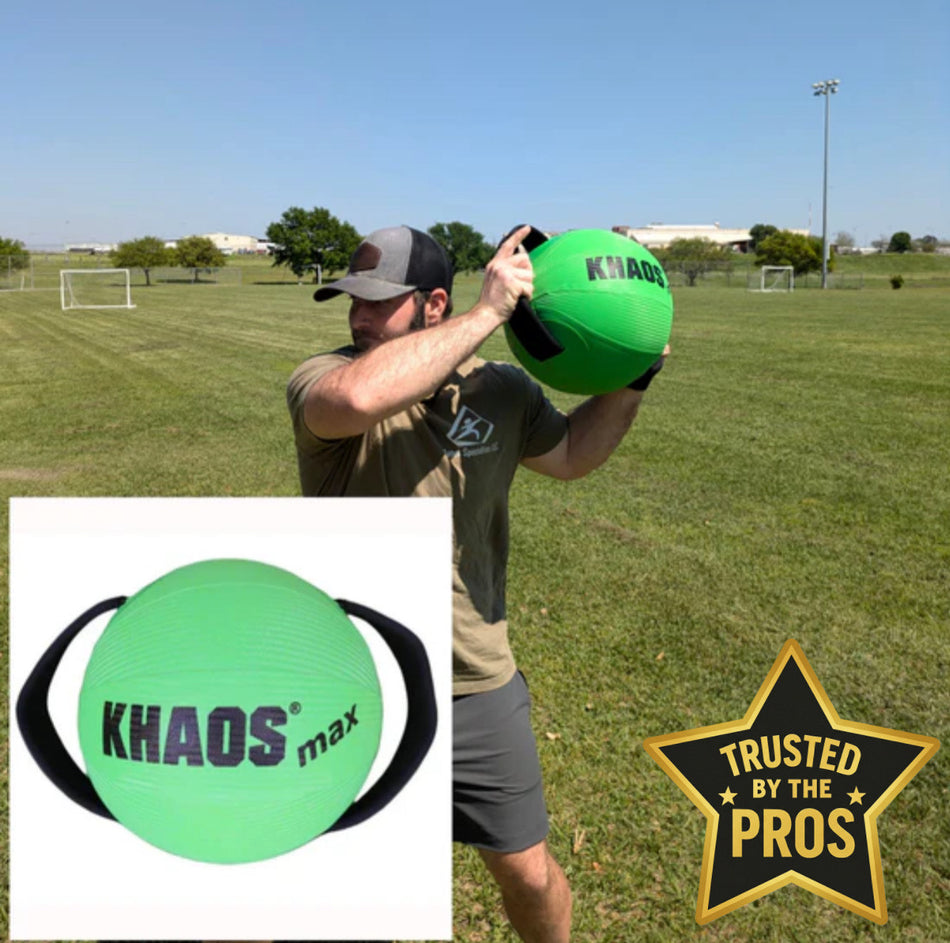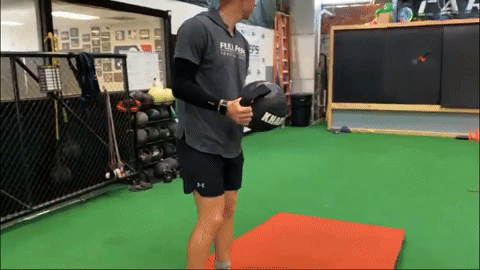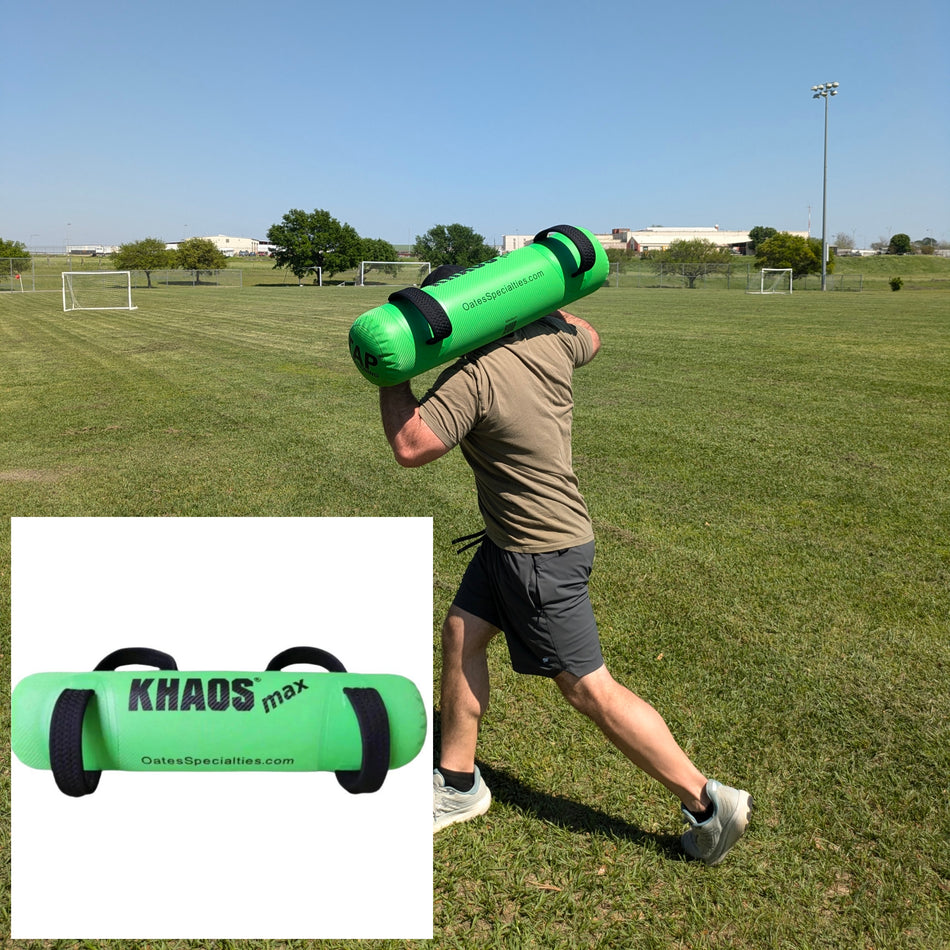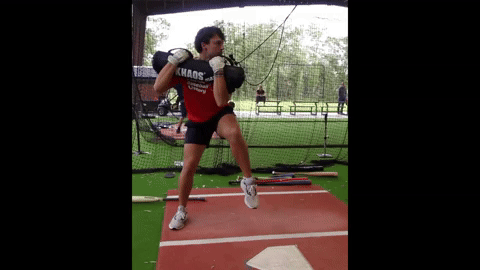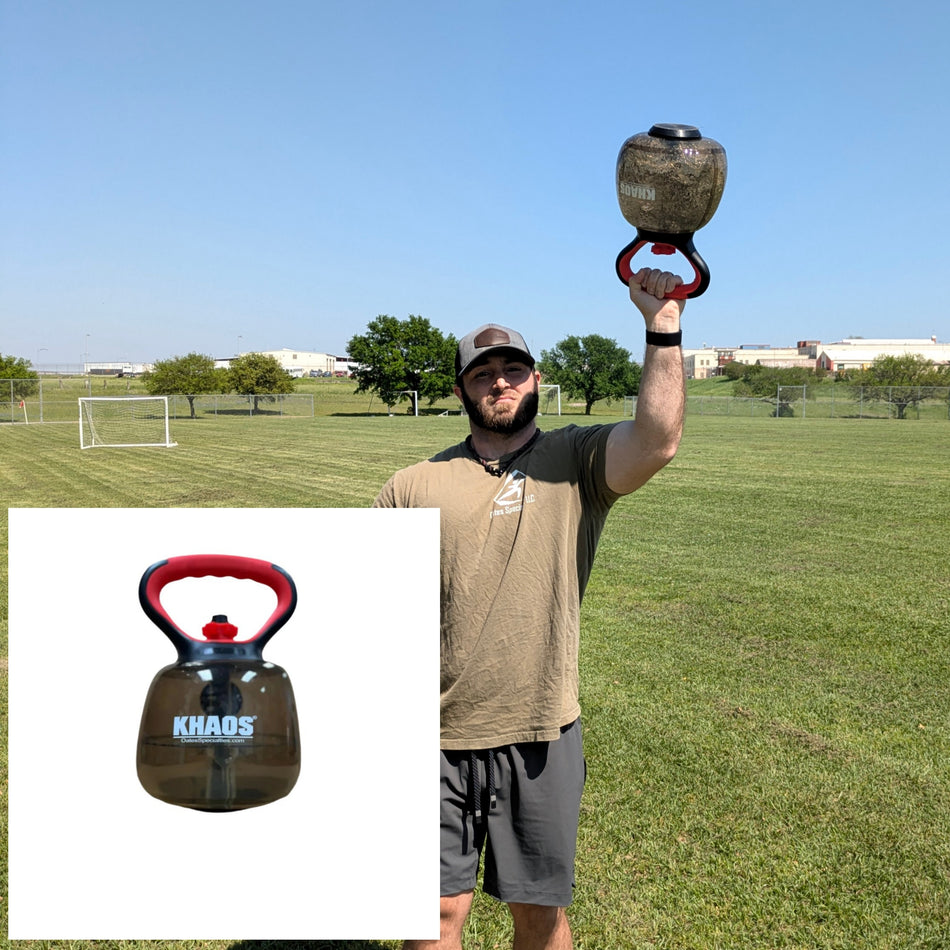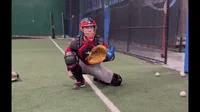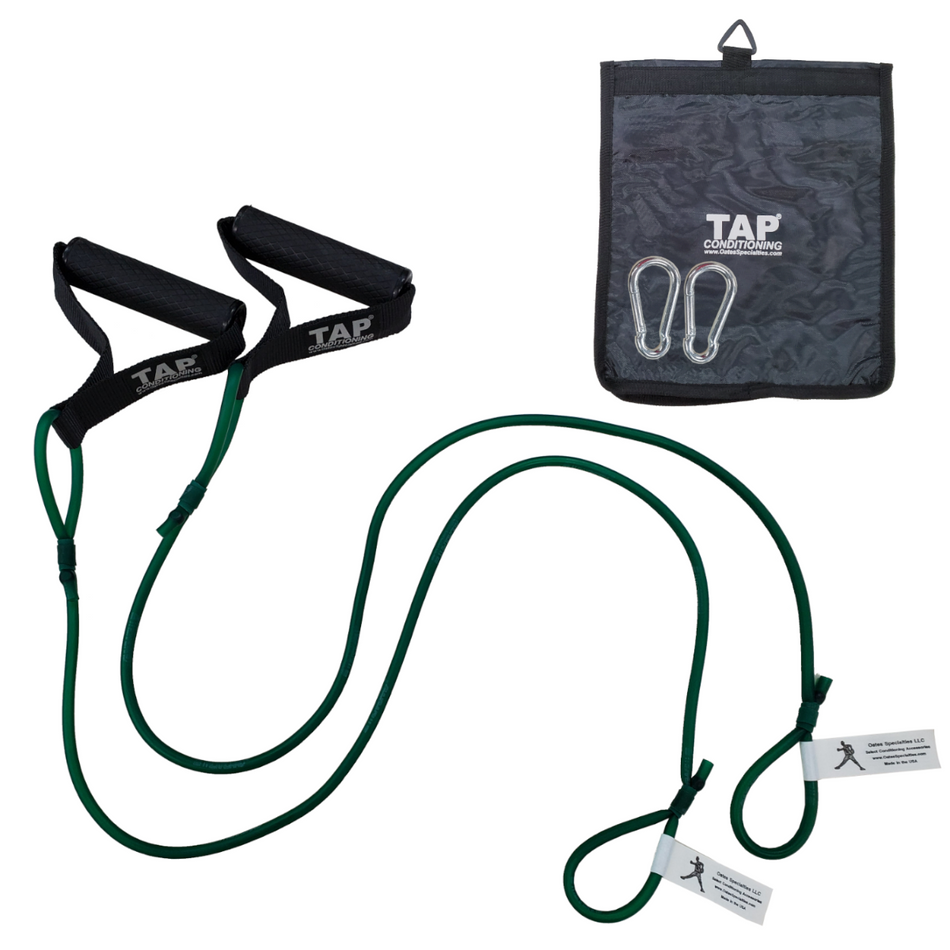Introduction - Sports like baseball, tennis, volleyball, and golf require quick turns, strong core muscles, and the ability to slow down your body safely after explosive movements. These sports involve twisting and rotating in powerful ways, so athletes need tools that help them train for these exact motions. One of the best tools for this kind of training is the Crescent-Shaped Water Bag. We call it the Bulgarian Water Bag and is shaped like a crescent moon. It’s filled partway with water and pressurized with air to add resistance and movement challenges. This paper describes the differences between the crescent shaped Bulgarian bag and standard cylinder shaped water bags, and it explains how the Bulgarian may be better suited for rotational movements while the standard water bags are better in frontal and sagittal plane activities. The crescent shape helps improve strength, balance, and control during movement. While cylindrical bags are great for linear and more general balance movements, the Bulgarian Water Bag has key advantages for athletes who need to twist, swing, and rotate at high speed.

How Air and Water Work Together in the Bag - Both the Bulgarian Water Bag and cylindrical water bags use a mix of water and compressed air. The water adds weight, and the air keeps the bag’s shape and makes it slightly bouncy. When filled to about 30–50%, the water can move around inside, creating what’s called dynamic resistance. That means the weight shifts during movement, forcing your muscles and core to react and stay balanced. The crescent shape of the Bulgarian Water Bag influences water similar to a funnel, forcing the water to flow down to a narrow end making the point at which the water hits it very precise and targeted rather than more general sloshing around like the cylinder shaped bags do. Researchers like Nairn et al. (2017) found that this kind of moving resistance helps activate core muscles and improve body awareness. This is important in sports where athletes need to stay balanced while moving fast. Too much sloshing, however, can throw an athlete off. That’s why the air pressure inside the bag matters—it helps control how the water moves. The crescent shape of the Bulgarian Water Bag directs water movement in a smooth, circular path. When you swing or rotate with it, the water flows toward the ends of the bag, but not all at once. This delays the impact and makes the slowing-down part of the motion (called deceleration) smoother and natural. In cylindrical bags, the water hits the ends too fast, which can make the movement feel jerky and harder to control.
Why Water Makes Training Harder—and Better - Because the water inside the bag moves around, your body has to work harder to control it. This forces your muscles and joints to stabilize during every part of the exercise. In fact, Behm and Colado (2012) showed that training with unstable loads, like water-filled bags, can increase muscle activity by 15–20% compared to traditional weights. That means even a 10 to 40-pound Bulgarian Water Bag can give you a workout similar to much heavier equipment. It also puts less stress on your joints, which is great for staying injury-free. For athletes, this is a big deal: better performance with lower risk.
Why It’s Great for Baseball and Other Rotational Sports - The Bulgarian Water Bag is especially useful for baseball players—both hitters and pitchers. Its shape allows for exercises that copy the body’s natural movement during swings and throws. You can do rotations, swings, and overhead circles that strengthen your hips, core, and shoulders all at once. The unique handles also help develop grip strength, crucial for controlling the bat and ball. Lee and Lee (2020) found that the special design and handles of the Bulgarian Water Bag help athletes build power in movements that happen across multiple directions (called multiplanar movements). For pitchers, the delayed water movement helps train the muscles needed to slow the arm down safely after throwing. This protects the shoulder and elbow, helping prevent injuries.
How the Shape Boosts Rotational Strength - The crescent shape spreads the weight farther from the handles. This increases torque, which is the twisting force your body uses when swinging a bat or club. Because the weight is off-center, your core and stabilizing muscles have to work harder, making your training more effective. Different handle options let you grip the bag in multiple ways to challenge grip strength and simulate different movements. Cylindrical water bags, on the other hand, have an even shape and are better for straight-line exercises like squats, presses, and carries. Behm and Colado (2012) say these bags are still great for building strength, but they don’t challenge your body the same way during twisting motions. The Bulgarian Water Bag gives better leverage for rotation-based exercises.

Better Water Movement and Slowing Down (Deceleration) - As you swing the crescent-shaped bag, the water flows along the curve and creates a delayed impact near the ends. This makes your muscles work harder to slow down the movement in a controlled way. This is important in sports like baseball or golf, where you need to quickly stop your body after swinging. Cylindrical bags don’t offer this delayed response. Water hits the end too soon, making it harder to train the slowing-down part of the movement properly. While both bag types use air to keep the shape and help water move, only the crescent shape gives that smooth, sport-like deceleration. That makes it a better training tool for explosive and controlled athletic moves.
Real-World Benefits - The Bulgarian Water Bag is practical, too. You can fill it with 10 to 40 pounds of water, depending on your fitness level. The air inside helps it keep its shape and last longer. Since water is easy to find and eco-friendly, you can use these bags indoors, outdoors, at the gym, or on the field. Cylindrical bags are still great for regular workouts. They’re easier to make and can carry more weight—often more than 50 pounds. They work well for building strength in straight-line movements, like frontal and sagittal plane movements, and are a good choice for every day training.

Things to Consider - Right now, there aren’t any published studies that compare crescent-shaped bags directly to cylindrical ones. But we can still learn a lot from research on dynamic loads and Bulgarian Bag training. These findings strongly support the idea that the crescent shape has real advantages. One challenge is that crescent-shaped bags are harder to make and can cost more. More research would help us understand just how much better they are in terms of improving speed, control, and injury prevention.
Conclusion - The crescent-shaped Bulgarian Water Bag, filled with water and air, is a powerful training tool for athletes who play rotational sports. It boosts torque, supports smooth deceleration, and activates more muscles even at lower weights. This makes it ideal for baseball, tennis, volleyball, golf, and other sports that require strong, controlled twisting motions. While cylindrical bags are still useful for basic strength and fitness, the crescent shape gives athletes and coaches an edge when training for real-world sports performance.

Ready to train smarter and move better? Explore our Bulgarian Water Bags to upgrade your rotational training today. Whether you're a coach, athlete, or parent supporting a young player, this tool could be the key to stronger, safer, and more effective workouts.
Position Paper: The Superiority of a Crescent-Shaped, Water-and-Air-Filled Bulgarian Bag Over Cylindrical Water Bags for Rotational Training
Introduction
Rotational sports such as baseball, cricket, volleyball, golf, and tennis require explosive power, core stability, and multi-planar movement, necessitating specialized training tools tailored for specific athletic performance. The Bulgarian bag, a crescent-shaped device invented in 2005 by Ivan Ivanov, was designed to mimic the dynamic resistance of handling live loads, making it ideal for rotational exercises. In contrast, general fitness training, often conducted in commercial fitness facilities, prioritizes broad strength and conditioning for diverse populations. This position paper argues that a Bulgarian bag with a crescent shape, partially filled with water and pressurized with air, is superior to cylindrical water bags for specific-purpose athletic training in rotational sports, particularly for baseball and cricket batsmen and baseball pitchers. Its advantages include dynamic water movement requiring greater strength at lower weights, optimized biomechanical leverage, versatile grip options, and a natural deceleration profile. Both configurations benefit from compressed air for structural integrity and free water movement, but the crescent shape offers distinct benefits for sport-specific training. Cylindrical water bags remain effective for general fitness training, ensuring a balanced perspective.
Role of Compressed Air in Water Movement
Compressed air is critical in both the crescent-shaped Bulgarian bag and cylindrical water bag, providing structural rigidity and enabling controlled water movement. Partial water filling (e.g., 30–50% capacity) creates a shifting center of mass, while air pressurization maintains the bag’s shape, preventing collapse and reducing excessive sloshing. Nairn et al. (2017) found that water-filled devices enhance trunk muscle activation and proprioception due to fluid dynamics, amplified by controlled instability. Langan-Evans et al. (2018) note that excessive sloshing can disrupt high-velocity movements, but air pressurization creates a spring-like resistance, allowing water to move freely yet predictably in both bags. The crescent shape’s curved geometry channels water into concentrated surges toward the narrower ends, delaying the impact compared to the cylindrical water bag’s linear path, where water reaches the ends earlier. This delayed, elastic impact, supported by Nairn et al. (2017), produces a sharp, responsive feel that mimics the natural deceleration in rotational activities like baseball and cricket batting, baseball pitching, golf swings, and volleyball serves. Glass and Albert (2018) suggest that dynamic load shifts replicate real-world movement patterns, enhancing the crescent bag’s suitability for specific-purpose athletic training. The cylindrical water bag’s earlier, steadier impact suits general fitness exercises like presses or carries, aligning with its broad applicability in commercial fitness facilities.
Water’s Demand for Greater Strength
Water’s fluid nature increases the strength demands of training, allowing effective workouts with lower actual weights, a key advantage for specific-purpose athletic training. The constantly shifting center of mass requires continuous stabilization from core and peripheral muscles. Behm and Colado (2012) found that unstable loads, such as water-filled devices, increase muscle activation by 15–20% compared to stable loads, as the body counteracts unpredictable movements. This heightened demand means a water-filled Bulgarian bag weighing 10–20 kg can elicit similar or greater neuromuscular effort than a heavier static implement, reducing joint stress while maximizing functional strength. For rotational athletes, this efficiency is critical, enabling targeted power and control development in sports like baseball, cricket, and volleyball without excessive load.
Value for Baseball and Cricket Batsmen and Baseball Pitchers
The crescent-shaped Bulgarian bag is highly valuable for baseball and cricket batsmen and baseball pitchers, whose movements demand rotational power, core stability, and precise deceleration. For batsmen, exercises like rotational swings or halos simulate the kinetic chain of a bat swing, engaging the core, hips, and shoulders to transfer force. Lee and Lee (2020) found that the Bulgarian bag’s design enhances force production in multi-planar movements, directly benefiting swing mechanics. In baseball, the bag strengthens rotator cuff muscles, reducing injury risk, as noted by Rodriguez-Santiago et al. (2019). In cricket, where batsmen face varied bowling speeds, the bag’s dynamic water surges mimic the reactive demands of facing fast or spin deliveries, enhancing timing and power. For baseball pitchers, the crescent bag’s rotational exercises (e.g., arm circles, torso twists) replicate the pitching motion’s transverse-plane dynamics, strengthening the shoulder girdle and core. Rodriguez-Santiago et al. (2019) recommend functional tools like the Bulgarian bag for rotator cuff rehabilitation, citing their ability to mimic sport-specific rotations. The delayed water impact trains eccentric muscle control, critical for decelerating the arm post-pitch, reducing strain on the elbow and shoulder. The lower weight needs due to water’s instability make the crescent bag ideal for pitchers, who require strength without excessive load to protect arm health. These benefits align with specific-purpose athletic training, contrasting with the broader goals of general fitness training in commercial fitness facilities, where versatility for diverse exercises is prioritized.
Optimized Biomechanical Leverage for Rotational Movements
The crescent shape’s curved mass distribution amplifies torque during rotational exercises, enhancing power transfer for batting, pitching, serving, and driving motions. Lee and Lee (2020) attribute the Bulgarian bag’s increased force production to its shape and handle placement, with the center of mass farther from the handles demanding greater core stabilization. Multiple grip options (main, exterior, and strap handles) enhance versatility and grip strength, vital for baseball and cricket batsmen and pitchers, as supported by Ratamess et al. (2018). Cylindrical water bags, with their linear mass distribution, are optimized for sagittal-plane movements. Behm and Colado (2012) note that cylindrical water-filled devices provide consistent instability for linear exercises, making them effective for general fitness training but less dynamic for transverse-plane rotations required in specific-purpose athletic training. The crescent bag’s biomechanical leverage, combined with its water-and-air filling, maximizes rotational power, offering a sport-specific advantage.
Enhanced Dynamic Water Movement and Deceleration
The crescent shape’s geometry creates a unique water movement profile, with water surging along the curved pathway to produce a delayed, elastic impact at the ends. Nairn et al. (2017) suggest that constrained shapes intensify fluid surges, increasing muscle activation for dynamic stability. This delayed impact, compared to the cylindrical water bag’s earlier, broader surge, mimics the natural deceleration in rotational activities. For example, in baseball and cricket batting and pitching, the follow-through requires controlled slowing, mirrored by the crescent bag’s responsive feel. Glass and Albert (2018) support this, noting that dynamic tools enhance proprioceptive feedback, aligning with the crescent bag’s sport-specific stimulus for athletic training. In the cylindrical water bag, water moves evenly, creating a steady, diffuse impact suitable for linear movements in general fitness training. Behm and Colado (2012) confirm that cylindrical bags enhance core activation, but their uniform shape limits surge intensity, resulting in a less dynamic feel. Compressed air ensures free water movement in both, but the crescent bag’s delayed, concentrated surges provide a superior training stimulus for rotational sports.
Practical Advantages
The water-and-air-filled Bulgarian bag offers practical benefits for athletic training. Water allows easy weight adjustment (5–30 kg), accommodating athletes of varying strengths, as noted by DiSalvo and Thomas (2019). Air pressurization enhances durability by reducing material stress, addressing wear concerns (Lee & Lee, 2020). Water’s sustainability supports outdoor training (e.g., baseball fields). Cylindrical water bags share these benefits but are simpler to manufacture, enhancing accessibility for general fitness training in commercial fitness facilities.
Value of Cylindrical Water Bags
Cylindrical water bags excel in linear strength exercises like squats, presses, and carries, supporting heavy loads (up to 50+ kg) and stable movements. Behm and Colado (2012) highlight their versatility for sagittal-plane training, ideal for general fitness training in commercial fitness facilities, where broad applicability for diverse populations is prioritized. Their portability suits gym or home settings, ensuring their value in non-specialized contexts.
Limitations and Considerations
No studies directly investigate a water-and-air-filled Bulgarian bag or compare water movement timing between crescent and cylindrical shapes, requiring extrapolation from unstable load research (Nairn et al., 2017; Behm & Colado, 2012) and Bulgarian bag biomechanics (Lee & Lee, 2020). Manufacturing a crescent-shaped, water-and-air bag demands reinforced linings and pressure valves, adding complexity. Cylindrical water bags are more commercially available, but the proposed configuration is feasible based on existing water-filled tools. Further research is needed to quantify deceleration and strength benefits in rotational sports.
Conclusion
The crescent-shaped Bulgarian bag, partially filled with water and pressurized with air, is superior to cylindrical water bags for specific-purpose athletic training in rotational sports, particularly for baseball and cricket batsmen and baseball pitchers. Water’s instability increases strength demands, reducing the need for heavy weights, as supported by Behm and Colado (2012). The crescent shape’s delayed, elastic surges mimic deceleration in batting, pitching, golf swings, and volleyball serves, per Nairn et al. (2017) and Glass and Albert (2018). Research on Bulgarian bag design (Lee & Lee, 2020) reinforces its sport-specific advantages. Cylindrical water bags remain effective for general fitness training in commercial fitness facilities, but the crescent bag’s tailored stimulus makes it a superior choice for rotational athletic performance.
References
Behm, D. G. & Colado, J. C. (2012). The effectiveness of resistance training using unstable surfaces and devices for enhancing strength, power, and balance. Journal of Strength and Conditioning Research, 26(10), 2624–2633.
https://doi.org/10.1519/JSC.0b013e318267a2d9
Synopsis: This review evaluates unstable resistance training tools, including water-filled devices, for strength, power, and balance. Unstable loads increase core and stabilizer muscle activation by 15–20%, with cylindrical water-filled tools noted for linear exercises.
Relevance: Supports water’s instability benefits, including increased strength demands at lower weights, and the cylindrical water bag’s effectiveness for general fitness training.
Verification: Accurate, peer-reviewed, and directly applicable to water-based training dynamics.
Nairn, B. C. et al. (2017). Motion and muscle activity are affected by instability training with a water-filled tube. Journal of Strength and Conditioning Research, 31(4), 884–892.
https://doi.org/10.1519/JSC.0000000000001559
Synopsis: This study examined a water-filled tube, finding increased trunk muscle activation and proprioceptive feedback due to fluid surges. Constrained shapes amplify surge intensity, enhancing dynamic stability.
Relevance: Supports the crescent shape’s dynamic water movement and delayed surges, relevant to deceleration in rotational activities.
Verification: Accurate, peer-reviewed, and relevant to water dynamics in shaped containers.
Lee, C. & Lee, S. (2020). Kinematics and kinetics of Bulgarian-bag-overloaded sprints in young athletes. Applied Sciences, 10(17), 5928.
https://doi.org/10.3390/app10175928
Synopsis: This study analyzed Bulgarian bag sprints, finding that the crescent shape and handle design increase force production in multi-planar movements, supporting rotational training efficacy.
Relevance: Demonstrates the crescent shape’s biomechanical advantages for rotational leverage, applicable to batting and pitching drills.
Verification: Accurate, peer-reviewed, and directly supports the Bulgarian bag’s design benefits.
DiSalvo, M. & Thomas, P. L. (2019). Functional training with the Bulgarian bag: Applications for combat sports and general fitness. Strength and Conditioning Journal, 41(4), 88–95.
https://doi.org/10.1519/SSC.0000000000000456
Synopsis: This article reviews the Bulgarian bag’s crescent shape, handles, and rotational exercise applications, noting its versatility and suitability for dynamic movements.
Relevance: Supports the crescent shape’s ergonomic and rotational advantages, including weight adjustability for varied athletes.
Verification: Accurate, peer-reviewed, and relevant to the Bulgarian bag’s design and training applications.
Langan-Evans, C. et al. (2018). Effects of unstable load training on force output and movement velocity. Journal of Sports Sciences, 36(15), 1742–1749.
https://doi.org/10.1080/02640414.2017.1416628
Synopsis: This study found that excessive sloshing in water-filled devices can reduce force output, recommending controlled instability for optimal performance.
Relevance: Supports air pressurization’s role in controlling water movement, ensuring stability for rotational exercises.
Verification: Accurate, peer-reviewed, and applicable to water-based training limitations.
Ratamess, N. A. et al. (2018). Acute effects of different grip strength training implements on maximal grip strength. Journal of Strength and Conditioning Research, 32(5), 1345–1353.
https://doi.org/10.1519/JSC.0000000000002017
Synopsis: This study found that tools with multiple grip options improve forearm and hand strength, relevant to sports requiring strong grips.
Relevance: Supports the Bulgarian bag’s multiple handles, enhancing suitability for baseball and cricket batting and pitching.
Verification: Accurate, peer-reviewed, and relevant to grip versatility.
Glass, S. C. & Albert, R. W. (2018). Dynamic resistance training: Physiological and biomechanical considerations. Sports Biomechanics, 17(3), 414–426.
https://doi.org/10.1080/14763141.2017.1362454
Synopsis: This review discusses dynamic resistance tools, noting that shifting loads mimic real-world movement patterns, enhancing proprioceptive feedback and functional performance.
Relevance: Supports the crescent bag’s delayed water impact as mimicking deceleration in rotational activities like batting and pitching.
Verification: Accurate, peer-reviewed, and relevant to dynamic load training.
Rodriguez-Santiago, B. et al. (2019). Rehabilitation management of rotator cuff injuries in the master athlete. Current Sports Medicine Reports, 18(9), 330–337.
https://doi.org/10.1249/JSR.0000000000000628
Synopsis: This review recommends functional tools like Bulgarian bags for rotator cuff rehabilitation, citing their ability to mimic sport-specific rotations and reduce injury risk.
Relevance: Supports the Bulgarian bag’s value for baseball batsmen and pitchers in strengthening rotator cuff muscles.
Verification: Accurate, peer-reviewed, and relevant to rotational training and injury prevention.





